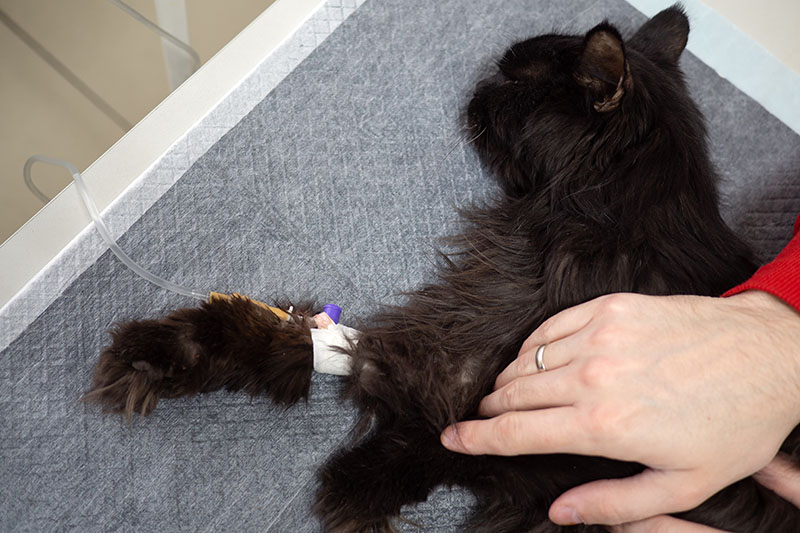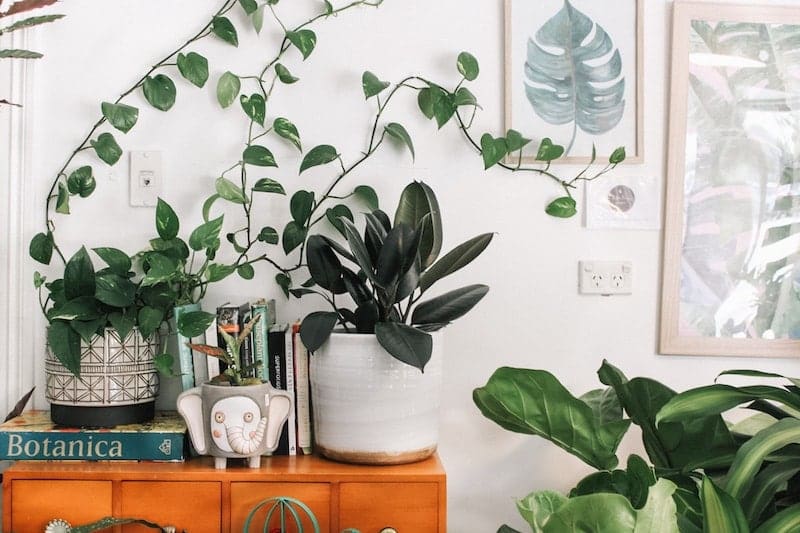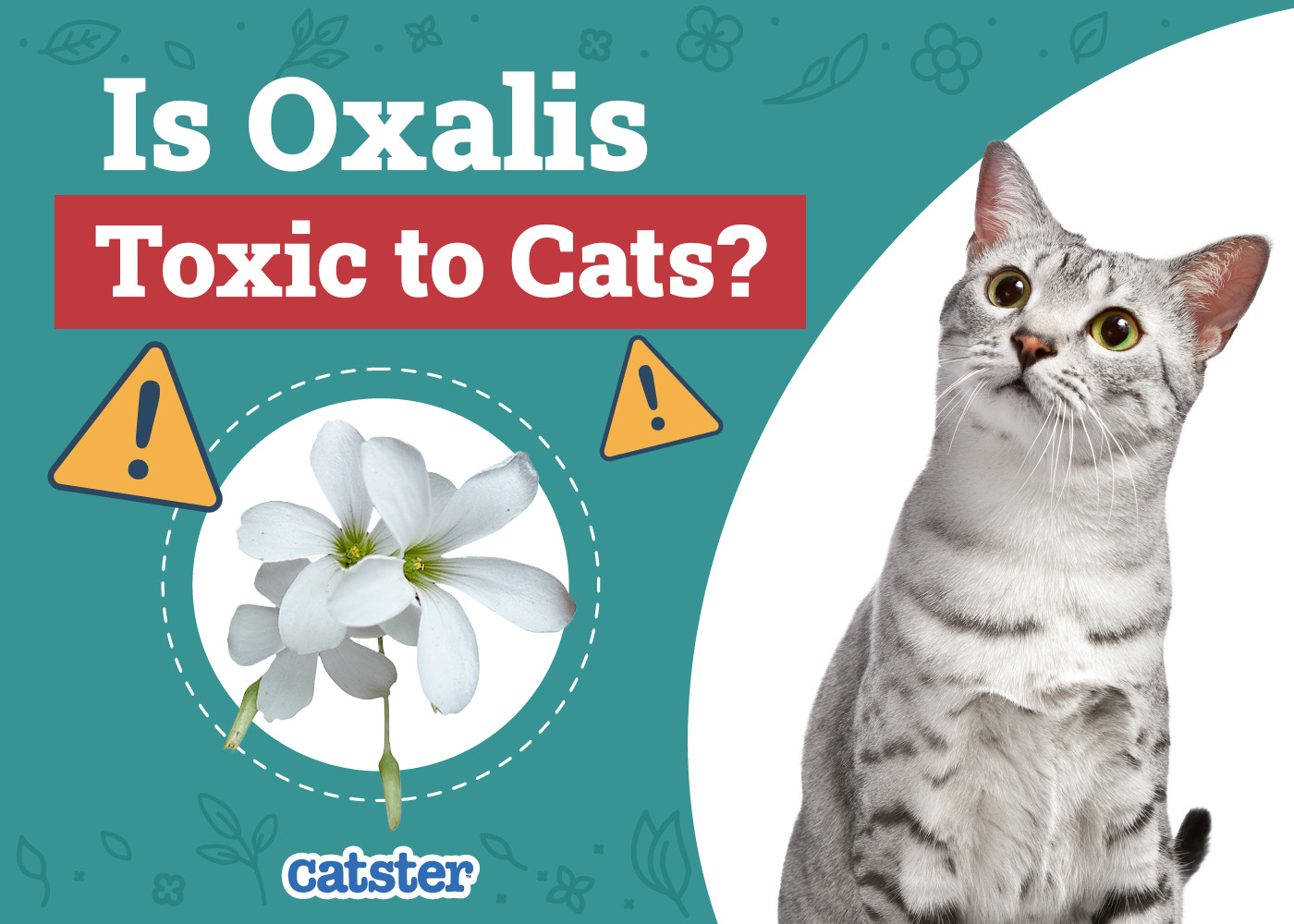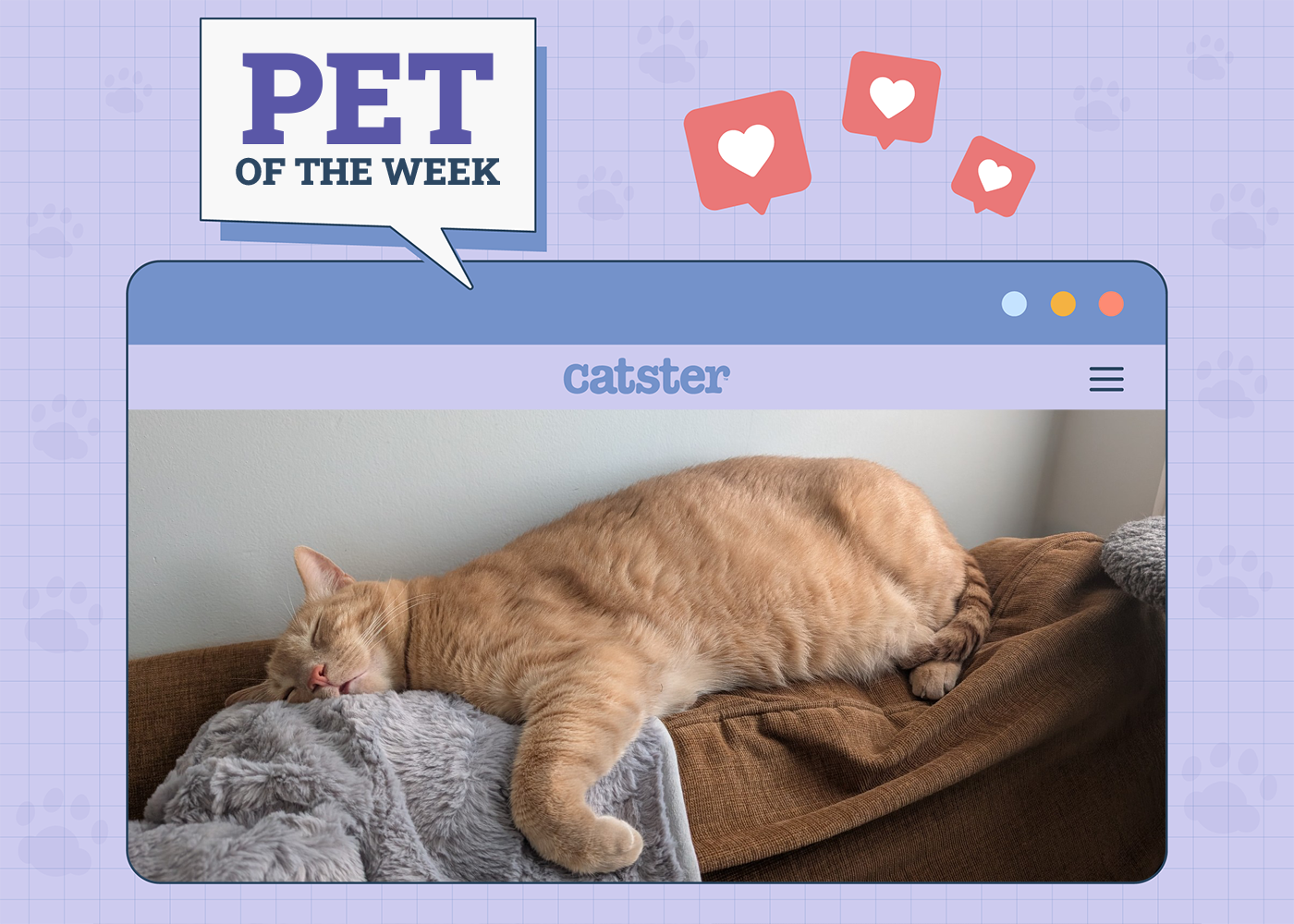Click to Skip Ahead
When we mention shamrocks, you might think of clovers too, but what is the difference? Well, all shamrocks are clovers, but not all clovers are shamrocks. The clovers that pop up across your lawn are harmless little weeds, while the Oxalis (or shamrock plant as it’s also known) is generally grown indoors or in gardens. Unfortunately, these pretty little plants are poisonous to cats.
Keep reading to find out everything you’ll need to know about this species and how it can harm your cat. We’ll also examine how to identify poisoning in your pet in the unfortunate event your bored feline takes a few bites out of the shamrock plant.

About the Shamrock Plant
Shamrocks are known for their delicate flowers and trifoliate leaves. To help identify them, you should know that they come under different names, such as sorrel, purple shamrock, and love plant.
Plants in the Oxalis genus contain oxalic acid and oxalate salts, which act as a self-defense mechanism against animals and pests that try to eat them. Oxalic acid can occur in a plant either in a soluble or insoluble form, and shamrocks contain soluble oxalate crystals, which is the more harmful of the two options.
It can cause hypocalcemia, which is a drop in the body’s calcium levels, and kidney damage. Your cat could also suffer gastrointestinal irritation as the soluble oxalate crystals move through their tract.
Thankfully, the shamrock plant has a particularly bitter taste, which will often deter your cat from ingesting large quantities. However, it’s vital to know which signs you should look out for in case your cat eats the leaves.

Signs & Treatment

The signs your cat exhibits will depend on how much of the plant has been ingested and how healthy they are. Cats with kidney problems, for example, are at an increased risk of severe and potentially fatal side effects. Most cats will not usually ingest too much of the plant, thanks to the bitter taste, so their signs may only be mild.
- Drooling
- Lack of appetite
- Lethargy
- Bloody urine
- Changes in thirst and urination
- Diarrhea
- Tremors
- Vomiting
- Weakness
Contact your vet immediately if you catch your feline eating a shamrock plant. While it is rarely fatal, it’s still a good idea to get professional advice regarding Oxalis poisoning.
If you take your cat to the vet before it vomits, it may induce vomiting to get the plant out of your cat’s system. They may also administer medication that will bind with the harmful compounds in your cat’s system to make them less dangerous.
If you need to speak with a vet but can't get to one, head over to PangoVet. It's an online service where you can talk to a vet online and get the advice you need for your pet — all at an affordable price!
How to Avoid Shamrock Poisoning
The best way to avoid shamrock poisoning is to remove it from your house or garden. Of course, it’s not always within your control. If you have an outdoor cat, they may come into contact with Oxalis away from your property. Thankfully, as we said, the oxalates in the plant give it a nasty bitter flavor that will probably deter your pet.
If you already have a plant in your home, keep it somewhere your cat can’t get to, like on a high shelf or in a secure room your cat cannot access.
We also recommend, regardless of the plant’s species, emptying the water that accumulates in your plant’s catch basins after they’ve been watered to prevent your cat from drinking it. If you’re unsure about adding a new plant to your home, you can always ask your vet for advice or visit the ASPCA’s toxic and non-toxic plant list.


Conclusion
The relationships you have with your cat and plants can be a tricky road to navigate. No matter the species, even a non-toxic houseplant can give your cat a sore tummy if it consumes too much, and the thought of a plant you’ve brought home hurting your feline friend is horrifying.
This doesn’t mean you remove all your plants. If you research your houseplants before buying them and cat-proof your non-toxic varieties, your feline can live safely with your flora.
Featured Image Credit by: Olena758, Pixabay










